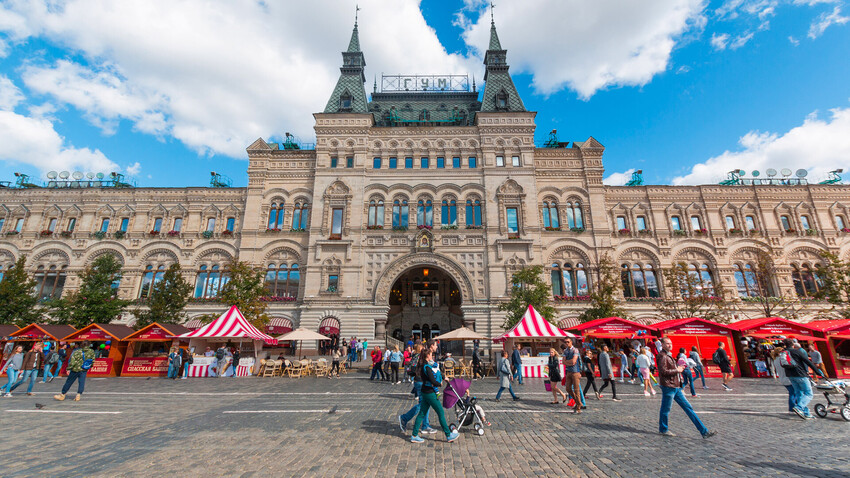
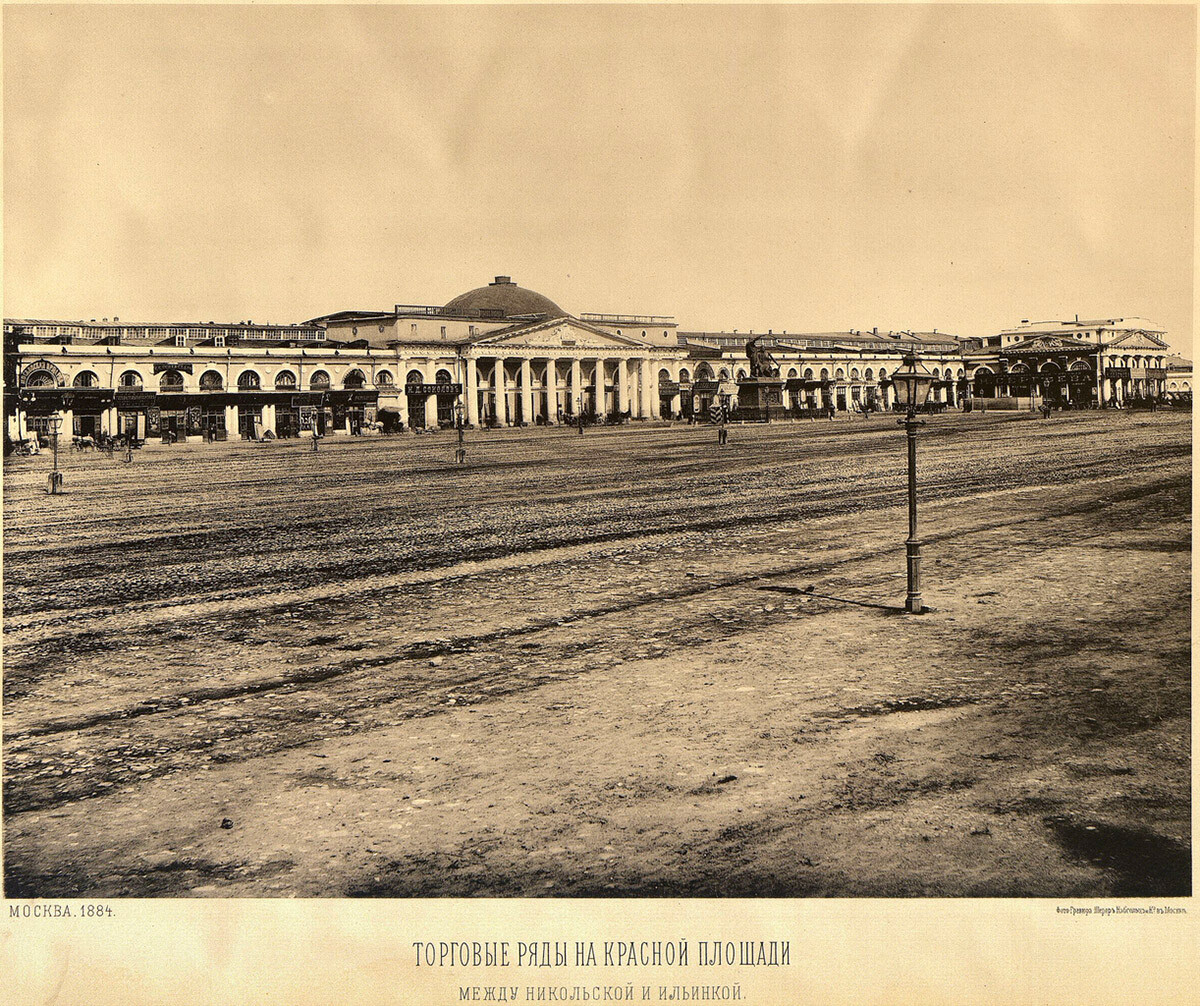
Trading by the Moscow Kremlin flourished long before GUM appeared. Once upon a time, peddlers offered their goods on the site and then stalls began to be erected. A fire "helped" the process of establishing "trading rows" here: Under Tsar Ivan III, they were made of wood, but, under Boris Godunov, bricks were used. Gradually, the space between Ilyinka and Nikolskaya streets was built up with what came to be known as the ‘Upper Trading Rows’. And the ‘Middle’ and ‘Lower Trading Rows’ were situated between Ilyinka and Varvarka streets and Varvarka Street and the Mytny Dvor area, respectively.
The trading quarter was rebuilt several times. Under Catherine II, it was redesigned by Giacomo Quarenghi, the architect of the Hermitage Theater in St. Petersburg and the Gostiny Dvor (Old Merchant Court) in Moscow. After the War of 1812, another prominent architect - Osip Bove, who designed the Kremlin Gardens (now called the ‘Alexander Gardens’) by the Kremlin walls and the Moscow Manezh - took over their reconstruction. In the 19th century, the Trading Rows had 600 shops under their roof, nearly all of them with their own individual owners. However, when the condition of the building began to deteriorate, they failed to agree on repairs.
Shoppers who came to the Upper Trading Rows started encountering not so much bargains as threats to life and limb: A piece of plaster could fall on customers' heads, while one lady was exceptionally unlucky - the floor under her collapsed in the middle of a fitting.
In the end, the city authorities simply shut down the old building and decided to build a new one.

The Upper Trading Rows, built in Russian Style, received their first visitors in December 1893. Architect Alexander Pomerantsev designed what was then the largest shopping center in Europe: He brought 16 different buildings under one roof by linking them into three three-story shopping galleries. They housed over 1,000 stores and salons, while the shopping galleries themselves were linked by walkways and arcades. From the Red Square, it looked as if a huge brick terem-style fairytale palace had sprung up alongside it, complete with turrets, gates and a grand, formal entrance.
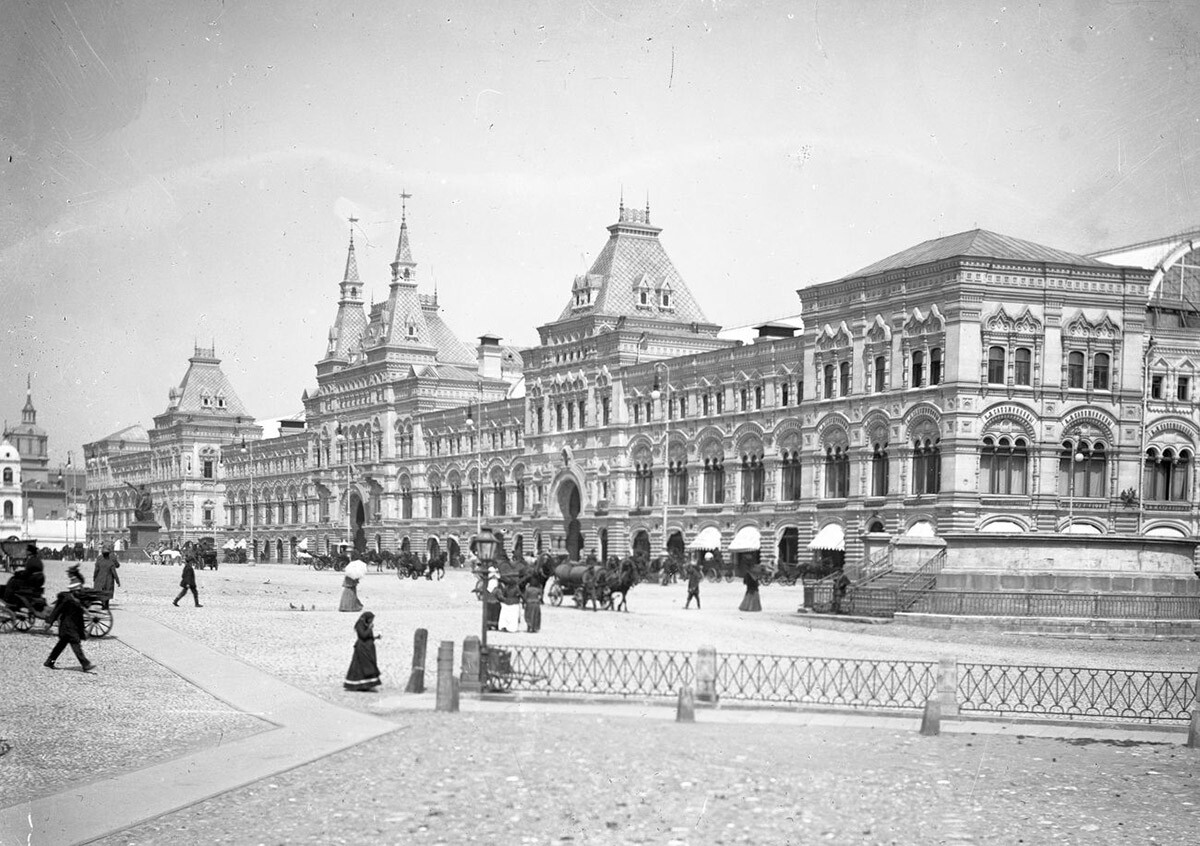
The Upper Trading Rows were self-sufficient: They had their own railway line to bring goods, as well as their own electricity generating plant and artesian well, bank and telegraph branches, tailoring establishments and numerous restaurants. Wholesale trade was conducted in the basement and retail trade on the floors above, while companies had their offices at the very top. It also had a public museum, in which works by European masters from the collection of perfumer Henri Brocard (Genrikh Brokar) were displayed and which was used as a venue for exhibitions and musical evenings.
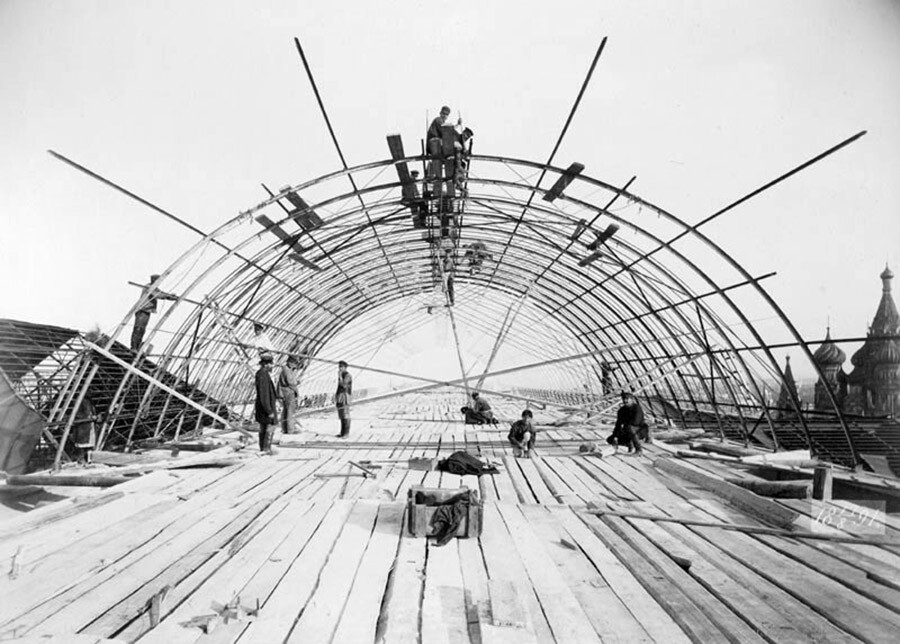
Unlike the earlier Trading Rows, which were not even illuminated with candlelight, because of the risk of fire, the new shop not only had electricity, but also an ultra-modern glass roof. Sixty-thousand separate panes of glass were needed for its construction: They were fitted to a steel framework and were able to cover a large span. This meant that trading during the day could take place by natural light, while, in the evening, there was a magnificent view of Moscow's night sky.
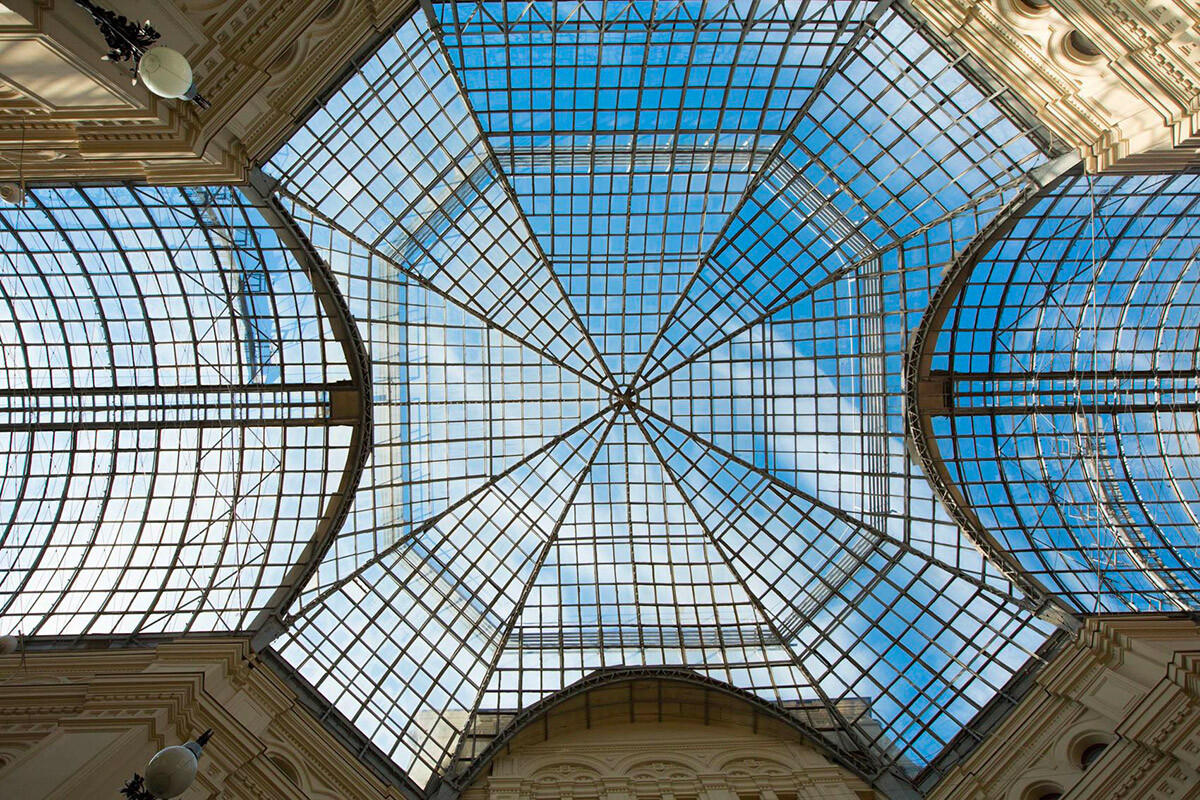
The system of arched girders is believed to have been devised by Engineer Otto Krel, director of the St. Petersburg Metal Works.
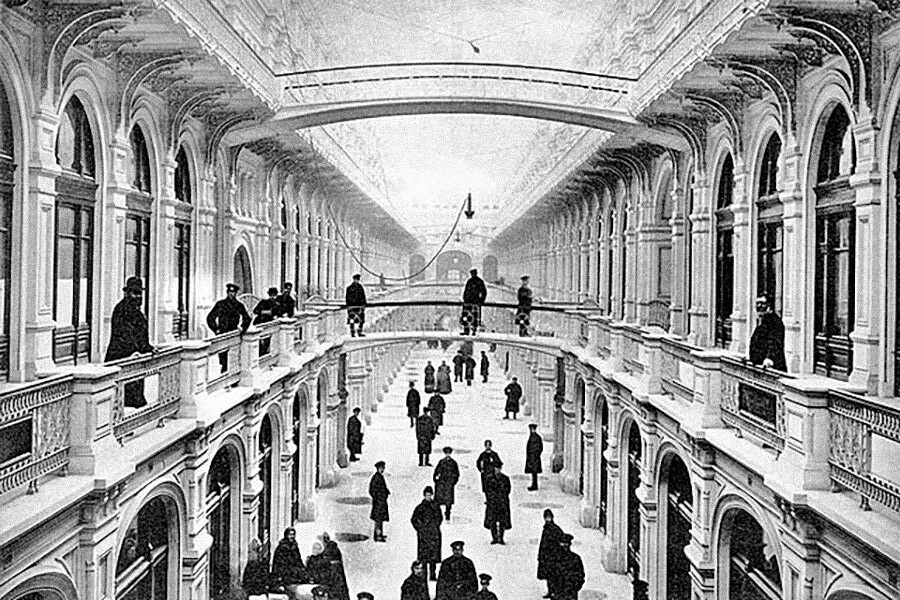
It wasn't just the architecture that impressed visitors to the new shopping concourse, but also its approach to the setting of prices. Trading in fixed prices was adopted there for the first time in Russia. And dissatisfied customers could leave comments in a special book - an early form of customer feedback.
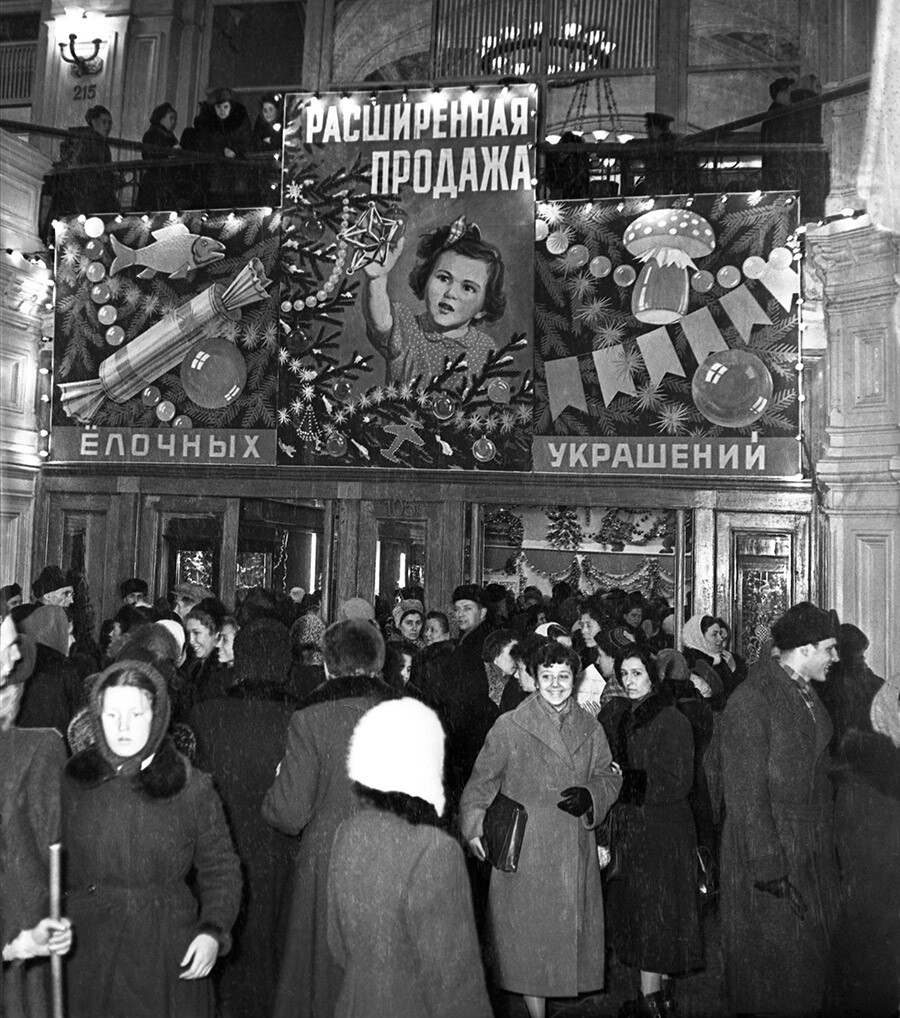
In 1921, Vladimir Lenin proclaimed the start of the New Economic Policy (NEP) and signed a provision founding the State Department Store (Russian abbreviation: GUM). A logo with the abbreviation "GUM" was devised by artist Alexander Rodchenko while the stores’ advertising slogans were composed by poet Vladimir Mayakovsky, who exhorted: "Clutch at this lifeline - you ought to, of course! Quality, low cost and straight from the source!" In 1930, Stalin closed down the popular department store, which, subsequently, housed ministries and Lavrenty Beria's office. Trading practically disappeared: There was only a branch of ‘Torgsin’, where goods were sold strictly for hard currency.
A farewell ceremony for Nadezhda Alliluyeva, the wife of Joseph Stalin, was held in the first line (i.e. arcade) of the GUM complex (then occupied by the All-Union Central Executive Committee) after her death in 1932.
For several decades, the upper floor of the department store housed communal apartments that were often home to more than 20 families. There were neither kitchens nor toilets there - cooking had to be done on kerosene stoves and residents had to wash in public conveniences.
GUM only reopened in December 1954, offering more than 30,000 items, from children's toys to furs and rugs.

A Christian Dior fashion show was held in Moscow for the first time in 1959: Yves Saint Laurent, came to the Soviet capital along with a group of models. ‘Life’ magazine organized a photo shoot at GUM: Girls in stylish costumes strolled around the galleries, posed before the main entrance and were photographed surrounded by astonished Soviet shoppers.
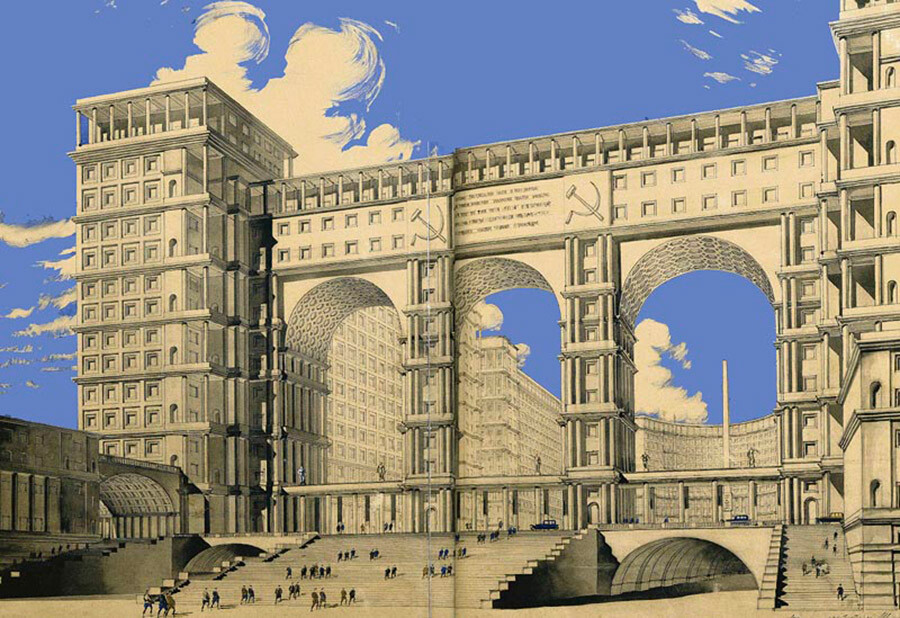
GUM was a step away from succumbing to a wrecking ball on a number of occasions. In the mid-1930s, there were plans to pull it down to make way for a building to house the People's Commissariat of Heavy Industry. Architect Alexey Shchusev, who designed Lenin’s mausoleum, wrote that the "Red Square is too cramped and should be widened by doing away with GUM to allow public rallies and parades to pass through". In 1947, there was a proposal to erect a monument commemorating victory in the Great Patriotic War on the GUM site. There was another plan to get rid of it in the early 1970s: According to one account, Leonid Brezhnev's wife Viktoria got wind of it and complained to her husband, who immediately intervened.
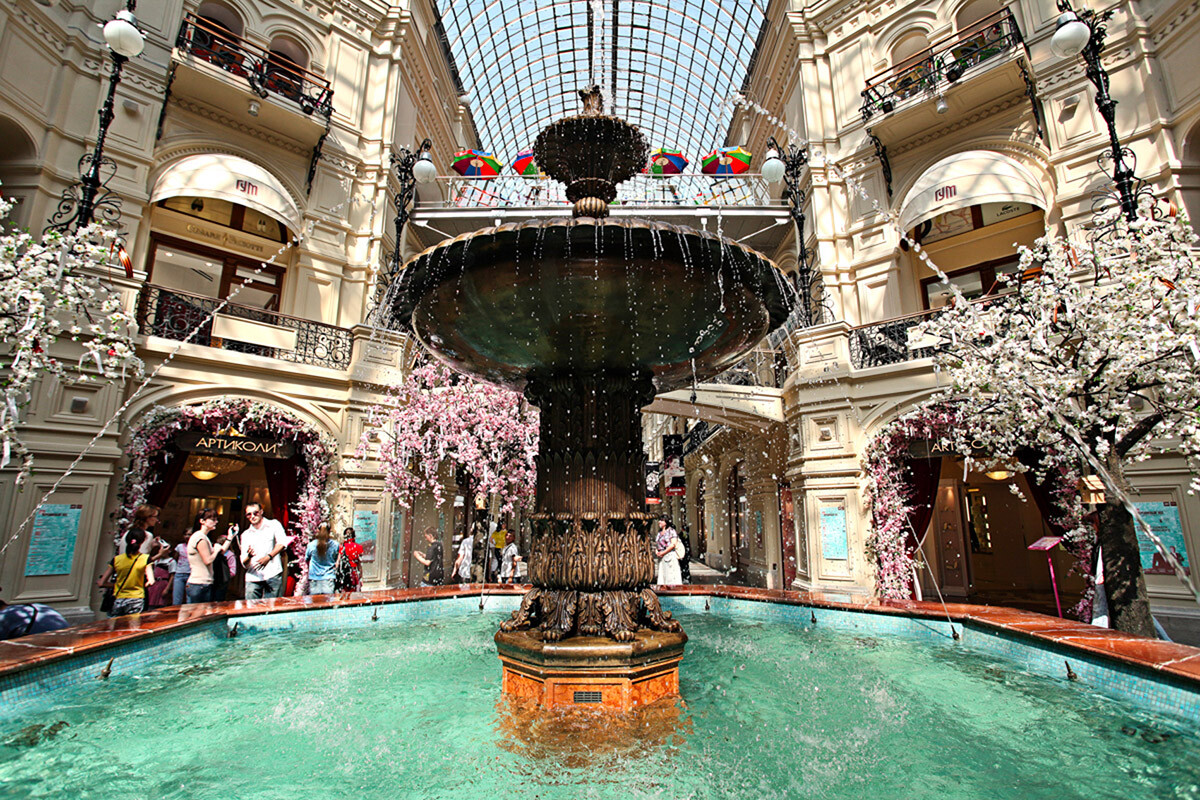
Some GUM traditions have stayed the same for many years. For instance, people often arrange to meet by the fountain, which happens to be the only fountains in Moscow that operates all year round. It is also frequently the focal point of various festivities and celebrations. For instance, in late summer, its basin is filled with ripe watermelons, while, in 2003, a three-meter cake was place there to mark the department store’s 110th anniversary, which all visitors could sample. Another mandatory highlight of any visit to GUM is the department store’s proprietary ice-cream served in wafer cups. It has been sold on the ground floor since Soviet times.

GUM is not just a huge shopping mall, but also an entertainment complex, of sorts. It has a cinema and a contemporary art gallery called GUM-Red-Line, while, in winter, the department store opens its own ice rink and fair right on the Red Square!
Dear readers,
Our website and social media accounts are under threat of being restricted or banned, due to the current circumstances. So, to keep up with our latest content, simply do the following:
If using any of Russia Beyond's content, partly or in full, always provide an active hyperlink to the original material.
Subscribe
to our newsletter!
Get the week's best stories straight to your inbox